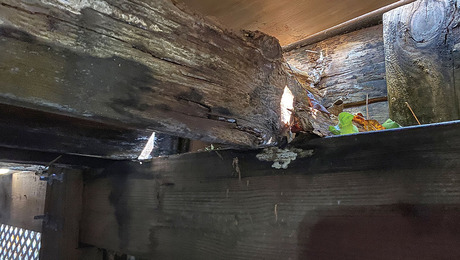Hardwood floor 3 1/8″ x 5/16″ SANTOS MAHOGANY
Just purchased about 1000 ft of prefinished Santos Mahogany in the 5/16″ and was reprimanded by my Eastern European father. Kept commenting in his broken English how cheap it was. For anyone that can help me come up with an argument with why 5/16″ is ok as opposed to 3/4″, please help. The part number is PFSM5/16 for anyone interested in researching and giving me their opinion.
Thanks















Replies
kruppie
Well, in T&G, there's more thickness that allows more refinishing when it becomes necessary.
If the thin mahogany is solid v. engineered with a plywood core, there's more chance of warp/cupping with the thinner stock.
You need to provide a link to the product-a search for that part number on the "santos mahogany" website turned up zero.
http://www.hursthardwoods.com/proddetail.php?prod=PFSM5%2F16
It will be ok
The need for solid wood flooring has kind of disappeared with the advent of better engineered floor systems. The old 1X diagonal flooring over 24-inch joist spacing, with 3/4-inch hardwood over the top needed the 3/4 hardwood for stiffness.
Modern flooring systems are pretty solid without the flooring because they are designed for sheet vinyl and carpet, so the finished surface is not expected to add any stiffness to the system.
From what I could find on the web, the material you bought is designed to be either glued or stapled down. My preference would be to staple it, but part of that preference is that I own the correct stapler for the material. Suitable staplers can be bought on eBay fairly easily, and not too expensively, and then sold on eBay for about what you paid for them when you are done with them. For that thickness of wood you will want one of the 19, 20, or 21-guage staplers to help keep from splitting.
The problem I have found with glueing thin materials like this, and even thick materials, is that the modern water based low voc adhesives tend to swell the bottom of the wood causing bowing and cupping. This bowing and cupping makes the installation very difficult. And, negates the aclimitization of the wood.